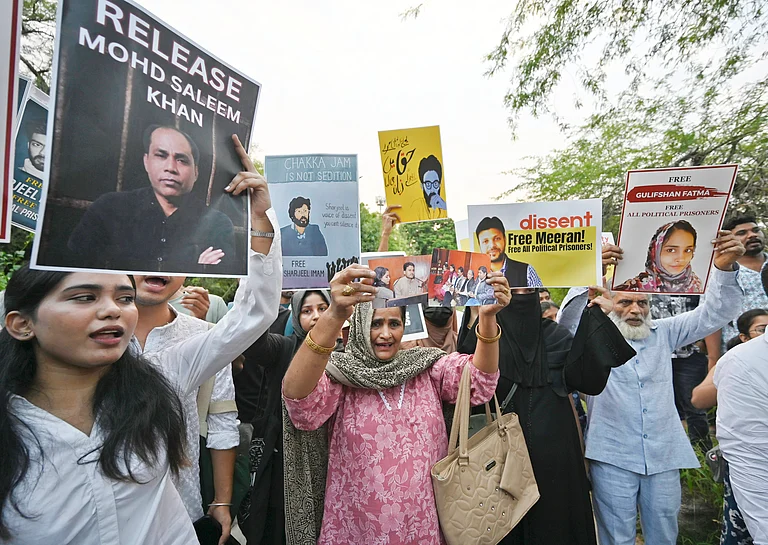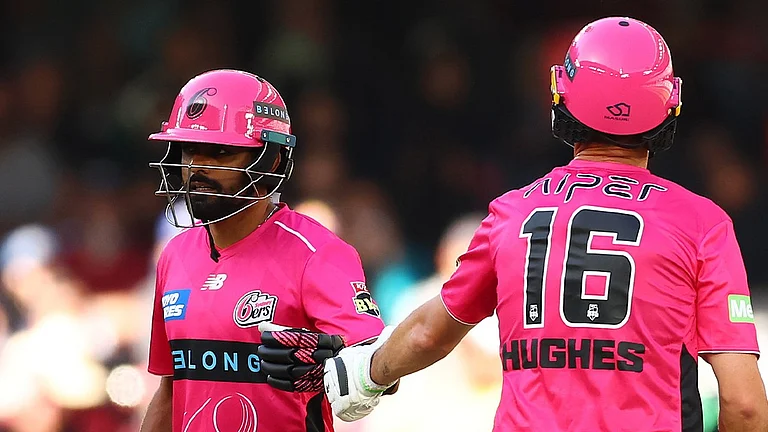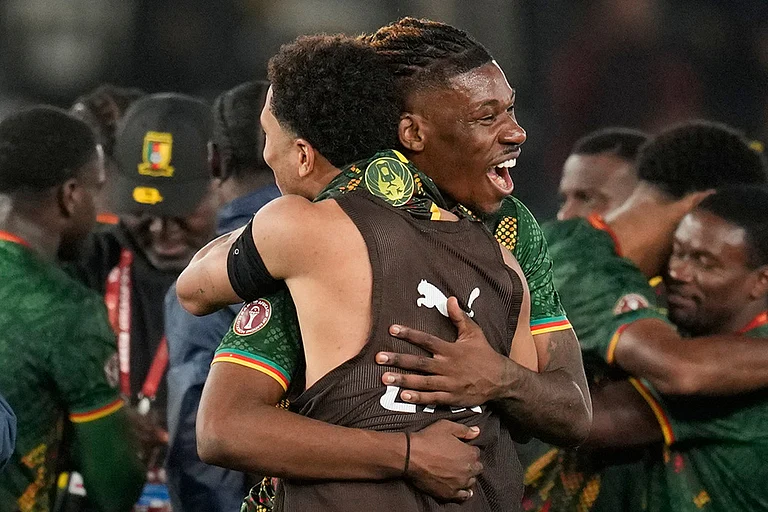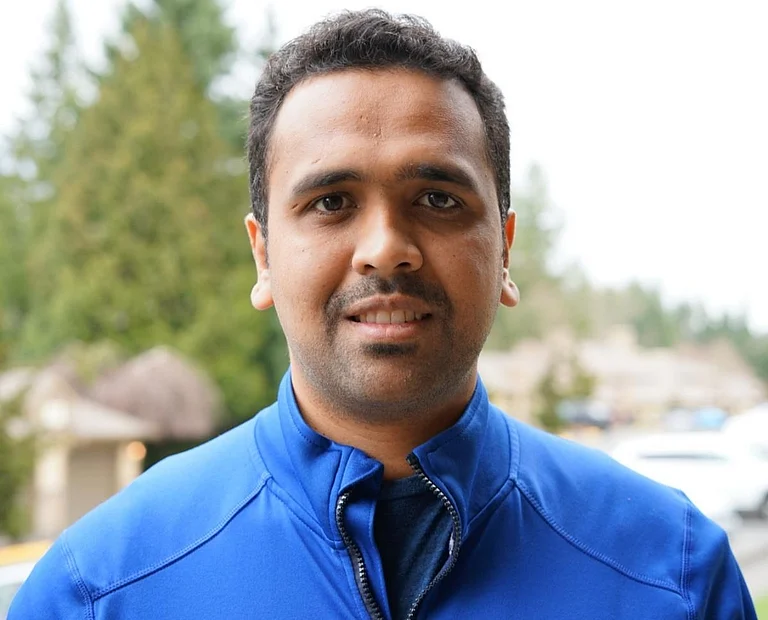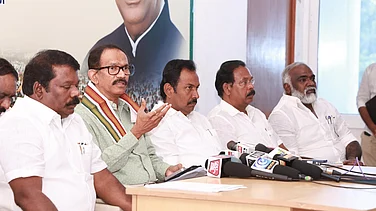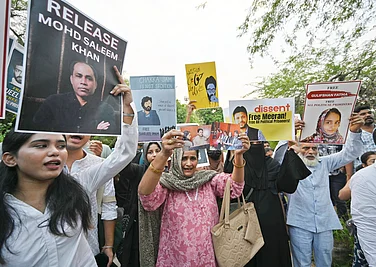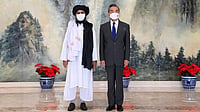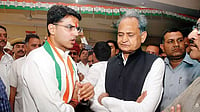Battered and bruised, the Congress party, in a bid to rejuvenate its cadres and establish contact with the masses of the country, has kick-started its ambitious Bharat Jodo Yatra. The march, led by Rahul Gandhi and planned to span over for roughly five months, will cover more than 3,570 kilometres from Kanyakumari to Jammu and Kashmir through 12 states and two Union Territories.
Commencing from Kanyakumari in Tamil Nadu, the padyatra will move northwards, passing through Thiruvananthapuram, Kochi, Nilambur, Mysore, Bellary, Raichur, Vikarabad, Nanded, Jalgaon, Indore, Kota, Dausa, Alwar, Bulandshahr, Delhi, Ambala, Pathankot and Jammu, before culminating in Srinagar.
The yatra comes at a time when the Grand Old Party— mired in a swamp of high-profile resignations and leadership crises— is finding itself pitted against Prime Minister Narendra Modi and his juggernaut. Amid staggering inflation, growing unemployment and communal polarisation, Congress through this campaign will attempt to provide “an alternative to the politics of fear, bigotry and prejudice”.
Senior Congress leader Tariq Anwar tells Outlook that the party had decided at its recent Udaypur Chintan Shivir that it would organise a massive programme to engage the public en masse, and vehemently expose and oppose the narratives of divisive forces “peddled by the BJP-led government and its ideological father, the Rashtriya Swayamsevak Sangh (RSS)”.
Rahul Gandhi will be accompanied by 118 padyatris throughout the campaign, with state leaders joining the march when it reaches their respective states. In each state, the march will move ahead in two batches—one from 7 am to 10.30 am and the other from 3.30 pm to 6.30 pm. While the morning sessions will include fewer number of participants, the evening sessions are likely to see mass mobilisations. And during the interval—11 am and 3pm— Rahul Gandhi and other senior leaders will interact with the local civil society representatives every day, in a bid to reap benefits in strengthening the party’s presence in areas where it lacks ground-level cadres, ahead of 2024 parliamentary polls.
“This is a mass mobilisation campaign,” Congress leader Jairam Ramesh tells Outlook, adding “and this will connect Congress to the people of the country.”
“For the first time in the history of Indian politics, a political party has launched such a gigantic campaign,” Ramesh tells Outlook.
‘Bharat Jodo Yatra as catalyst’
Since 2014, Congress started losing its electoral sheen. The party has lost most of its elections since and is currently leading the government in just two states—Rajasthan and Chhattisgarh. Moreover, of late, Congress has been witnessing an escalation in internal dissent, with more and more key leaders resigning from the party, often to join BJP. The spate of desertions and the ensuing structural problems have sent the spirits of party workers into an abyss.
“Stuck in an unprecedented stalemate, the party has become hollow,” a source close to Rahul Gandhi tells Outlook, adding, “the Bharat Jodo Yatra will play a key role in mobilising the cadres and rejuvenate the spirits of the party functionaries". Whether the yatra will garner any electoral dividends for the Grand Old Party ahead of the 2024 parliamentary polls, or the upcoming state assembly polls, the source says, only time can tell.
However, Congress has been maintaining that the motive of the padyatra is not to focus on elections. Christopher Tilak, the AICC secretary, tells Outlook, “Through this yatra, we don’t want to talk about upcoming elections, but the upcoming generations, and how their future is at stake.”
The whole campaign is two-pronged in nature. The yatra, after crossing each state, will be followed by a string of state-level campaigns. The yatra will act as a catalyst for other campaigns that will be run by the leadership in their respective states, a Congress leader tells Outlook. One of such campaigns is the Samvidhan Bachao Yatra (Save the Constitution March), wherein party functionaries will march up to 75 kilometres in their respective states to spread awareness about the “BJP’s onslaught on constitutional values.”
K. Raju, Congress' national coordinator for the SC, ST, OBC and minorities, tells Outlook that besides amplifying the message of the Bharat Jodo Yatra, the Samvidhan Bachao Yatra will also aim to mobilise marginalised sections of society.
“Besides spreading awareness about how the BJP is demolishing the institutions of the country’s constitution,” says K. Raju, “we will also conduct door-to-door campaigns to raise the awareness about the core minority issues like caste census and reservations.” And these campaigns, he adds, will kick-start after the Bharat Jodo Yatra leaves a respective state and enter another one.
The campaigning is also aimed to scout for fresh party workers,
A tight-rope walk for Congress
As the beleaguered Grand Old Party is hoping to revive its fortunes, political observers are sceptical about the way campaign has been planned. Congress, by large, as it seems, is trying to tap the groups that are disgruntled with the status quo rather than the groups who are complicit with the BJP rule. Political analysts like Manindra Thakur believe that this is a negative strategy and will end up not reaping Congress any benefits.
“A party like Congress cannot halt on a negative plan for long,” says Thakur, “and rather than keeping responding to BJP’s questions, the party should have focused on creating a new agenda to which the BJP will necessarily have respond,” says Thakur, adding “it is important to critique the ruling party’s doings, but that criticism alone cannot revitalise the party or revive its sheen.”
“Before setting out to march across the country, Congress ought to have reworked on its ideological frame, and attempted woo people by showing what they have to offer them in coming ten years for example” says Thakur, who teaches at Jawaharlal Nehru University.
“Rather than speaking about secularism/communalism, or constitutionalism for instance, they should offer an alternative vision as to what the party has in store for the country,” says Thakur adding, “maybe this might dawn upon the party during the yatra itself!”
Neera Chandhoke, a political scientist who was formerly a professor of political science at Delhi University hones similar concerns. “There is a need to tell people not only where the Congress comes from,” Chandhoke writes, “but what it has in store for a society that has been wracked by mutual suspicion, by vigilantism, by hatred, by violence, and by lack of effective governance. We need a vision statement”.
However, ideological reconstruction is not the only challenge before the Grand Old Party. The road ahead for Congress is fraught with more tangible hurdles. With Gujarat and Himachal Pradesh slated to go to assembly polls by the end of this year, any loss for the Congress is likely to be projected as the failure of the Bharat Jodo Yatra.
“If Congress loses in Gujarat or Himachal, which seems a possibility,” says a Congress insider, “the BJP forces will brand the Bharat Jodo Yatra as a miserable failure.”
He further adds, “Congress needs to tread carefully, or it might just catapult itself into the dustbins of history.”







